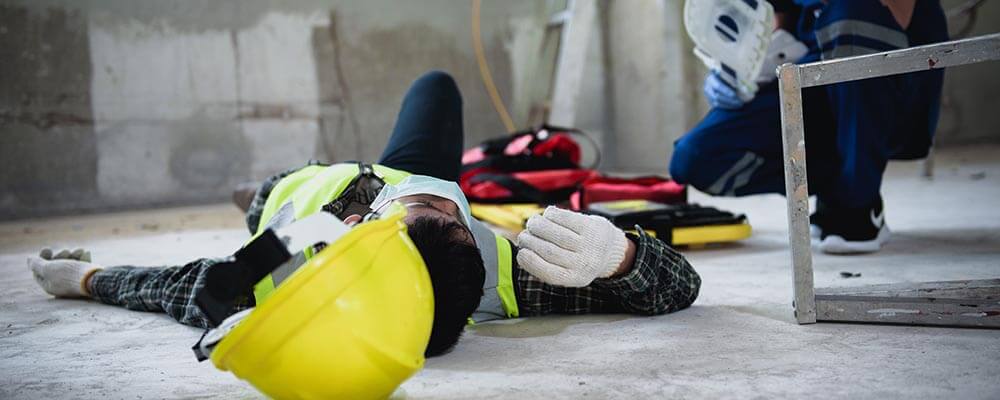San Antonio Construction Accident Attorney

San Antonio Construction Accident Lawyer Serving Texas
Workplace accidents are not always easy to predict, and workers may be injured even if they and their employer followed the correct safety procedures. Some work environments are more dangerous than others, including construction sites where workers may face the risk of injury due to complex machinery, heavy materials, toxic substances, and a variety of other issues. In many cases, construction workers may be unsure about their options following a work-related injury, but by working with a lawyer who understands the applicable laws and regulations, a person can ensure that they will be able to receive financial compensation.
At Alford Law PLLC, we are well-versed in the legal issues that affect injured workers, and we can help victims of construction accidents protect their rights and pursue compensation from all available sources. We can help establish liability for a workplace accident by demonstrating that the negligence of an employer or other parties led to a person's injuries. We will help victims understand the best ways to ensure that they will be fully compensated, and we will advocate strongly on our clients' behalf to make sure they will have the financial resources they need as they recover from their injuries.
Accidents and Injuries Affecting Construction Workers
There are a multitude of safety issues that could potentially lead to injuries for people who work on construction sites or perform other types of construction work. Some common situations where construction workers may be injured include:
- Falls - Defective ladders or scaffolds may lead to fall injuries, or workers may fall from an upper level to a lower level due to a lack of protective barriers, uncovered holes in a roof or floor, or a failure to use safety equipment such as harnesses or tethers. Even relatively minor fall accidents may lead to broken bones, traumatic brain injuries, or spinal cord injuries, but falls from a great height are likely to result in severe injuries or wrongful death.
- Equipment injuries - Multiple types of heavy equipment may be used at a construction site, including excavators, bulldozers, cranes, or dump trucks. Improper operation of equipment may cause a person to be run over or struck by heavy machinery, or overturned equipment may crush a worker and cause severe injuries.
- Falling objects - Materials, tools, or other items that are dropped by workers may strike people passing below, leading to serious head injuries or other forms of bodily harm.
- Collapsing trenches - When digging trenches or performing other types of excavation, the proper supports should be used. A collapsing trench may bury a worker, potentially leading to suffocation or death.
- Electrocutions - The proper precautions should be taken when working around electrical lines. Underground wires may be dug up while performing excavations, overhead lines may be struck by cranes or other equipment, or electricians may fail to properly ground wires. This may lead to electrocution injuries affecting equipment operators or others on a construction site.
Construction workers will often be covered by workers' compensation, and they will be eligible for benefits that will address their medical treatment, loss of income while recovering, or permanent disabilities. If an employer is a non-subscriber, meaning that they do not have workers' compensation insurance, an injured employee may recover compensation by demonstrating that injuries occurred because of the employer's negligence, such as failure to provide the proper safety equipment. If another party was responsible for a person's injuries, such as a subcontractor who failed to follow the correct safety procedures while working on a construction site, a victim may be able to pursue a third-party claim and recover additional compensation.
OSHA standards are meant to help prevent unnecessary workplace injuries and deaths. Unfortunately, there are many companies that attempt to cut costs and avoid their responsibilities, and they may not put forth the necessary efforts to abide by their legal obligations to keep workers safe. While violations of OSHA standards may not necessarily be sufficient on their own to prove an employer's negligence in a lawsuit related to a workplace injury, they certainly can and will be used by Alford Law PLLC as evidence that an employer was negligent.
Like many other laws put in place at the federal level, OSHA's standards do not overrule state-level laws and regulations. In many cases state laws will provide employees with a higher level of protection. OSHA's regulations provide a minimum standard that all private employers are required to meet to meet. Workers in many Texas occupations are protected by specific laws and regulations, and Alford Law PLLC can address state-level health and safety laws that may apply in a specific workplace, ensuring that these issues will be properly considered in your case.
Contact Our San Antonio Construction Worker Injury Lawyers
There may be multiple causes of an accident or injury at a construction site, and injured workers will need to determine the steps they can take to ensure that they will be fully compensated for the harm they have suffered. Our attorneys can provide legal help and representation in these cases, identify all liable parties, and make sure a person's rights will be protected. We will help negotiate settlements that will fully address a person's injuries, and we will not be intimidated into accepting less than our clients deserve. Contact our office today by calling 210-951-9467 and arranging a complimentary consultation with an experienced work injury attorney. Our firm has offices in Dallas, San Antonio, Austin, Houston, and Corpus Christi, and we provide legal help and representation to clients across the state of Texas.






 Free consultations
Free consultations 
